|
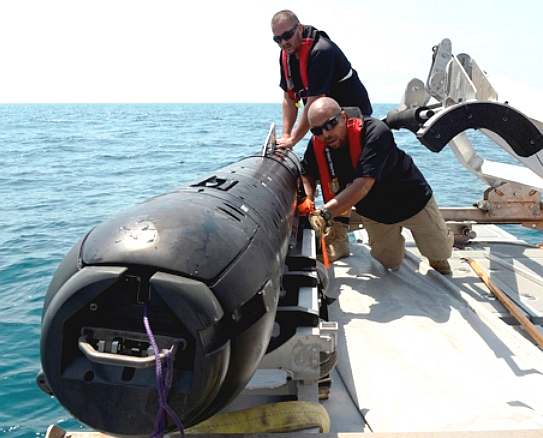
GUARDIAN
DEC 2012 - US Navy's mine-hunting dolphins will be replaced by robots in 2017
A Naval programme of training sea mammals to tag mines, begun in the 1950s, will be phased out in favour of machines.
The US navy is set to replace its team of mine-tracking dolphins with under-water robots, but reassignment rather than redundancy awaits the military pod.
Starting in 2017, 24 of the Navy's 80 military-trained dolphins will be replaced by a 12-ft (3.6-metres) unmanned torpedo-shaped vehicle, according to the newspaper UT San Diego.
The military said the machines can do some of the same mine-hunting duties as the sea creatures. And they can be manufactured quickly, unlike the seven years it takes to train a dolphin.
But the dolphins won't be relieved of duty. They'll be used along with sea lions for port security and retrieving objects from the sea floor, the newspaper reported.
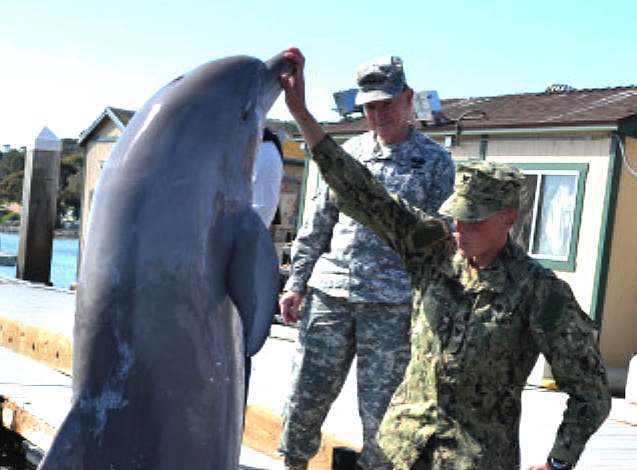
The navy's $28m marine-mammal program dates back to the late 1950s and once included killer whales and sharks. Based in San Diego, it currently uses 80 bottle-nosed dolphins and 40 California sea lions.
In recent years, dolphins have been deployed to Iraq and Bahrain to patrol for enemy divers and mark the locations of mines.
Using their innate sonar, the mammals find and mark mines in shallow water, in deep water when tethers are used, and on the bottom where sediment cover and plant growth can hide the devices.
Dolphins are carried aboard navy ships in large movable pools, about 20ft (six metres) in diameter. Dolphins traveled on the amphibious ship Gunston Hall in 2003 for the Iraq war.
Most of the navy's dolphins and sea lions are housed at Point Loma naval base, in pools sectioned off from the bay. Others guard navy submarine bases in Georgia and Washington state, according to UT San Diego.
The military is responsible for the mammals' care throughout their lives, even after they're retired from active duty. Sometimes navy dolphins are loaned to animal parks, such as Sea World, later in life.
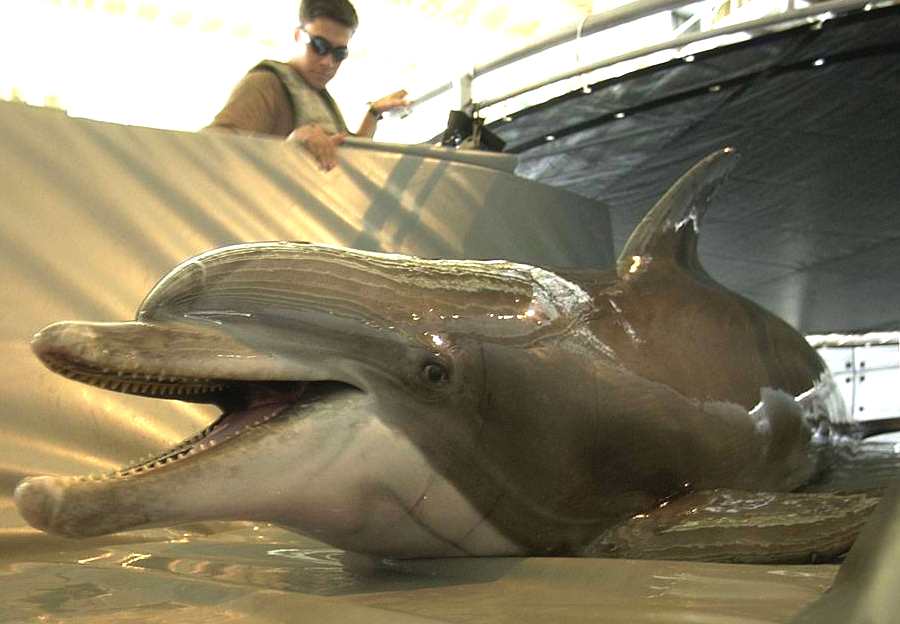
HUFFINGTON
POST
The Navy has always said that it treats its military animals with utmost care, and likens their use to that of security patrol dogs, whose sense of smell is superior to humans and many machines.
It has been criticised in the past, particularly. by animal rights groups, but says it is subject to the same laws and regulations as any organisation.
The service says on its website: "Just as the dog's keen sense of smell makes it ideal for detecting land mines, the U.S. Navy has found that the biological sonar of dolphins, called echolocation, makes them uniquely effective at locating sea mines so they can be avoided or removed."
It adds that rumours about the Navy deploying animals as offensive weapons are completely false.
"The Navy does not now train, nor has it ever trained, its marine mammals to harm or injure humans in any fashion or to carry weapons to destroy ships.
A popular movie in 1973 ("The Day of the Dolphin") and a number of charges and claims by animal rights organizations have resulted in theories and sometimes actual beliefs that Navy dolphins are assigned attack missions. This is absolutely false.
Since dolphins cannot discern the difference between enemy and friendly vessels, or enemy and friendly divers and swimmers, it would not be wise to give that kind of decision
making authority to an animal."
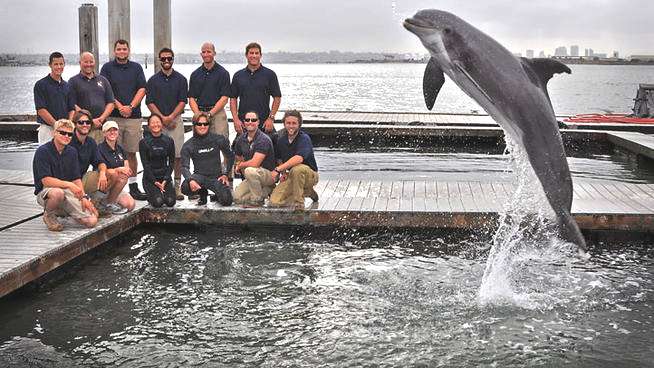
MAY
2013 - Dolphins locate 19th-century torpedo off California coast
The echolocation of bottlenose dolphins kicks butt compared to high-tech, billion-dollar military sonar equipment. Navy-trained dolphins discovered a 19th-century torpedo long lost in the deep water off the coast of Southern California. During routine training for underwater mine detection, two dolphins, Ten and Spetz, each returned from dives and touched the front of a Navy boat, signaling that they’d found something. Odd, as this was an area where there should be nothing to find. The dolphins led divers to the object, discovering a 100-plus-year-old Howell torpedo broken in two pieces, now inert. The brass-encased bomb, state-of-the-art for its time, is only the second known to exist. After cleaning, it will end up at the Naval History and Heritage Command in Washington, D.C.
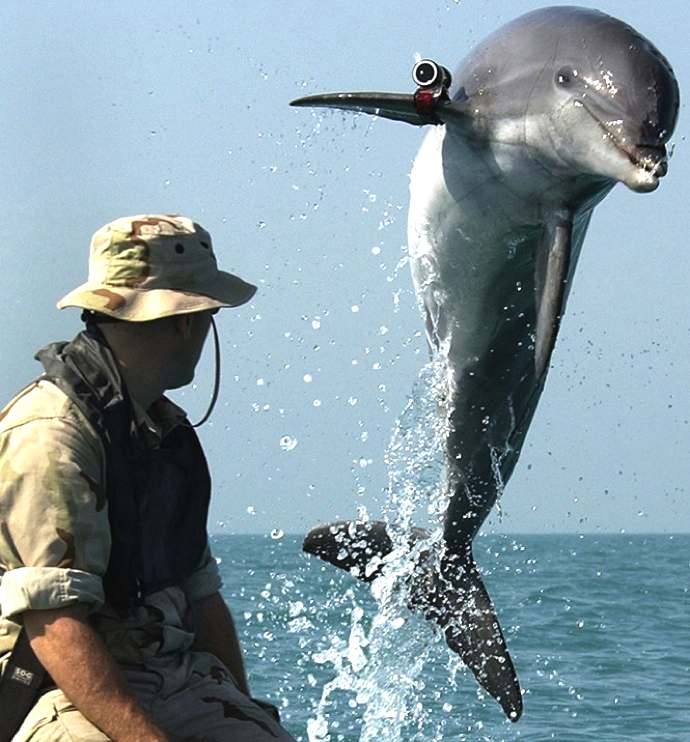
NAVY
MARINE MAMMAL PROGRAM
It's a textbook case of not appreciating what you have until it's gone: the U.S. Navy plans to replace some of its mine-hunting dolphins with unmanned submersibles described as "12-foot torpedo-shaped robot[s]" by 2017.
Everyone is familiar with security patrol dogs. You may even know that because of their exceptionally keen sense of smell, dogs like beagles are also used to detect drugs and bombs, or land mines. But a dog would not be effective in finding a sea mine.
But just as the dog's keen sense of smell makes it ideal for detecting land mines, the U.S. Navy has found that the biological sonar of dolphins, called echolocation, makes them uniquely effective at locating sea mines so they can be avoided or removed.
Other marine mammals like the California sea lion also have demonstrated the ability to mark and retrieve objects for the Navy in the ocean. In fact, marine mammals are so important to the Navy that there is an entire program dedicated to studying, training, and deploying them. It is appropriately called the Navy Marine Mammal Program (NMMP).
And there it is. Those of you with lingering concerns about the well-being of these elite sleuths of the sea may note that the Naval Marine Mammal Program is an accredited member of the Alliance of Marine Mammal Parks and Aquariums," which is dedicated to the "care and conservation of marine mammals."
Apparently over 100 dolphins and sea lions are currently employed by the NMMP to locate and identify mines and potential enemy divers, and only 24 of the dolphins will be replaced by robots over the next five years (they will be "reassigned to other tasks," a spokesman reports), so the end is not yet come. The sea lions will be unaffected by the change, in keeping with the generally more blasé approach of sea lions to life in general. While most of the Navy's marine mammals live and train in San Diego, some have been used to guard naval bases along the Pacific Coast and even been employed in the Middle East.
This news has significant implications for Navy vessels - according to UT San Diego, enemy mines have been responsible for "14 of the 19 Navy ships destroyed or damaged since 1950."
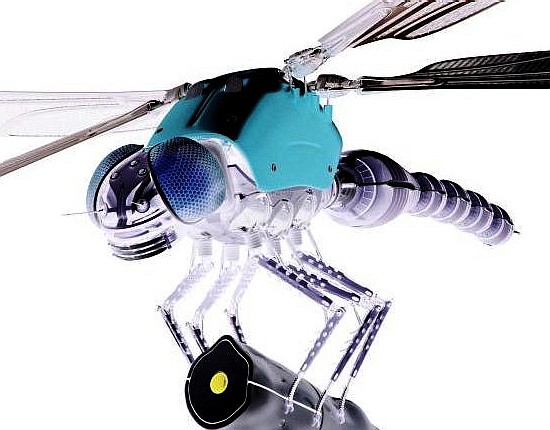
The
proposed Dragonfly system is based on the patent 'Bluefish' energy
harvesting platform and SNAV to provide low cost persistent monitoring of
key routes.
LATEST
DEVELOPMENTS
LONG
RANGE AUTONOMOUS
MINE HUNTING & SWEEPING
The
latest innovation (2013) in mine neutralization is a recent British
invention that combines existing techniques within a surface platform that
uses energy from nature and advanced autonomous technology to search near continuously
for mines without the need for a crew and as a 'world' fleet exercise
coordinated by a central command. Such a vessel combined as a coordinated
fleet cuts the cost of the persistent monitoring that is necessary to
ensure that submarine and other fleet and commercial corridors are free of
mines that may have been planted by, among other enemies, radical groups
(terrorists).
The
development of this technology is ongoing to not only improve the quality
of mine disposal and effectiveness, but also to reduce the cost of
operations for organisations such as NATO
and the pollution caused by the military who now also recognize that they
owe a duty (MARPOL)
to the environment.
Without
continuous forward development opposing forces might easily take the
strategic lead with tactics in place developed using disruptive technology
that allied forces are through lack of proactive impetus may be caught off
guard.

A
heartwarming adventure: pirate whalers
V conservationists
with
a $Billion dollars riding on the conclusion.
SUBMARINE
INDEX
Alvin
DSV - Woods Hole Oceanographic Institution
HMS
Astute 1st of Class
BAE Systems
HMS
Vanguard- Trident
INS
Sindhurakshak - explosion
& sinking
Lusitania
- Torpedo
attack
Nuclear
submarines lost
at sea
Predator
- Covert submarine hunter/killer
Seawolf
- Autonomous wolf pack deployment of Predator mini-subs
Torpedoes
- UUV anto submarine weapons
U20
- Kapitan Leutnant Walther Schwieger
USS
Bluefish WWI submarine
USS
Bluefish - Nuclear submarine
USS
Flying Fish
USS
Jimmy Carter - Seawolf class fast attack nuclear submarine
USS
Nautilus - 1st nuclear submarine & subsea north pole passage
LINKS
http://www.seewinter.com/winter
http://www.navaldrones.com/seafox.html
http://www.huffingtonpost.co.uk/2012/11/08/us-navy-mine-hunting-dolphins_n_2092509.html
http://www.miltechmag.com/2013/08/auvsi-2013-unmanned-naval-systems.html
http://gawker.com/5964980/those-job+stealing-robots-are-going-after-the-navys-mine+hunting-dolphins
http://www.quicksilvercontrols.com/2011_RoboticDolphin.html
http://www.independent.co.uk/news/world/americas/robots-to-replace-navys-minehunting-dolphins-8374242.html
http://www.theguardian.com/world/2012/dec/02/us-military-replace-dolphins-robots
http://ruvr.co.uk/2013_03_12/Ukrainian-military-dolphins-go-missing/
http://www.guns.com/2013/03/12/ukrainian-military-dolphins-armed-with-guns-on-the-loose/
http://www.wired.co.uk/news/archive/2012-12/03/dolphin-bomb-disposal
http://now.msn.com/navy-dolphins-find-rare-19th-century-torpedo-off-california-coast
http://www.theguardian.com/world/2012/dec/02/us-military-replace-dolphins-robots
http://en.wikipedia.org/wiki/Talisman_UUV
http://www.theengineer.co.uk/in-depth/mine-busters/299583.article
http://www.history.navy.mil/wars/korea/minewar.htm
http://www.time.com/time/magazine/article/0,9171,926817,00.html
The_Corfu_Channel_Case_(UK_v._People_Republic_of_Albania)
hhttp://en.wikipedia.org/wiki/HMHS_Britannic
hhttp://en.wikipedia.org/wiki/HMHS_Britannic
http://en.wikipedia.org/wiki/Admiralty_Mining_Establishment
http://en.wikipedia.org/wiki/Naval_mine
http://www.enterprise-europe-scotland.com/sct/news/?newsid=4306
|
Robot
& Dolphin Jet
- Youtube
|
|





